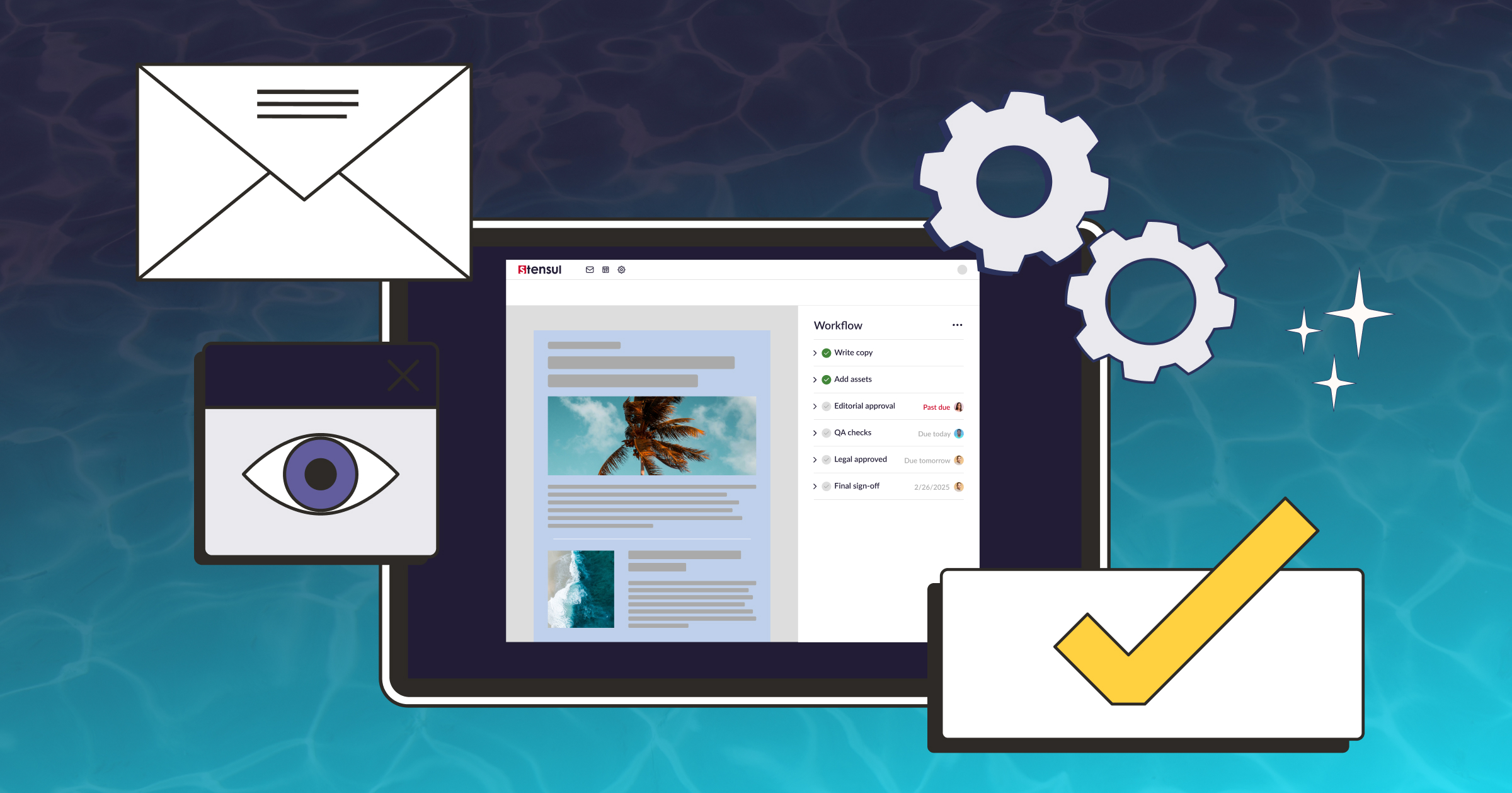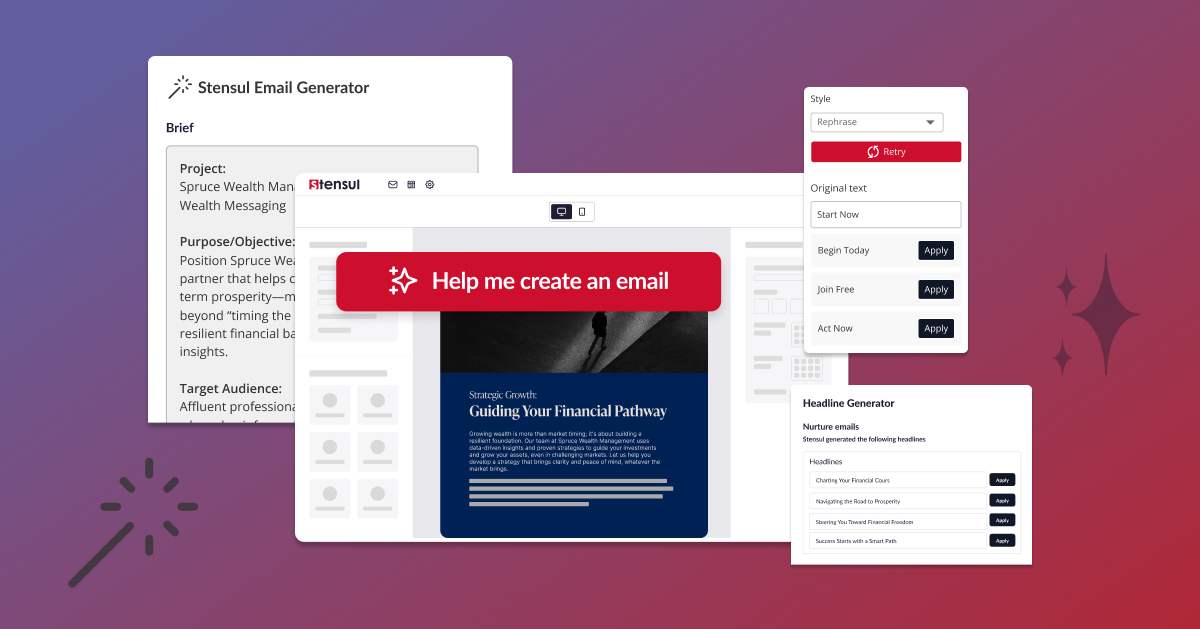Personalized email marketing has become the cornerstone of successful email marketing campaigns. However, for many marketers, scaling up true personalization can seem insurmountable. The truth is, it doesn’t have to be.
The struggle of personalization: time-consuming and complex
As a savvy marketer, you know the importance of personalization. Emails with personalized subject lines are 26% more likely to be opened—one of the more basic approaches to personalization. Moreover, personalized emails deliver six times higher transaction rates. Despite these compelling statistics, implementing personalization remains a steep mountain to climb for most marketers.
One primary reason for this struggle in time and effort is the difficulty scaling the processes used to produce personalized emails using dynamic content authoring (DCA). It all becomes unwieldy as the size of your email list grows—as the scale of personalizing increases. Plus, maintaining relevance and accuracy in personalized emails is challenging the more targets and the more individualized messages you want to use.
The power of personalization in email marketing
Despite the challenges, the rewards of effective personalization are undeniable. Some of the world’s biggest and best brands see the value of trying to personalize bulk emails. Here are just a few data points as to why personalization is so key to top brands’ email marketing strategy:
- Personalized emails achieve better results, including the most basic email metric, an open rate of 29%.
- Personalized calls to action show a 202% increase in click-through rate.
- Personalized B2B emails have an open rate of 20% higher than non-personalized emails.
- 49% of consumers are more likely to purchase a brand that sends them personalized emails.
- 57% of marketers attribute improved visitor engagement to the implementation of email personalization.
- Revenue is 5.7x higher in emails that are personalized.
Personalizing email at scale
Achieving personalized email marketing at scale requires a strategic approach and the right tools. Of course, as with most aspects of marketing, you can achieve better results by following best practices for email personalization.
Here are some actionable strategies to streamline the process and be able to personalize email at scale:
1. Use customer data
Harness the power of customer data to segment your email list effectively. Collect information such as purchase history, browsing behavior, and demographic details to tailor your messages accordingly.
2. Employ behavioral triggers
Implement behavioral triggers to send personalized emails based on specific actions or milestones. Whether it’s a welcome email for new subscribers or a follow-up email after a purchase, triggering emails based on user behavior enhances relevance and engagement.
3. Conduct A/B testing
Continuously test different personalization strategies to optimize your email performance. Experiment with variations in subject lines, content, and calls to action to identify what resonates best with your audience.
4. Establish a feedback loop
Regularly solicit feedback from your audience to refine your personalization efforts. Monitor metrics such as open rates, click-through rates, and conversion rates to gauge the effectiveness of your email campaigns and make data-driven adjustments.
5. Use dynamic content automation
Invest in dynamic content automation tools that allow you to create email templates with placeholders for personalized content. By scripting dynamic content blocks, you can automate the insertion of personalized information, such as the recipient’s name or recommended products, and much more, so the recipient feels like your brand understands them.
The challenges of automated dynamic content authoring
A significant reason email personalization at scale is difficult is that technical teams must write unique scripts for each segment you send a personalized email to. That eats up the time of a technically skilled specialist and slows down the efficiency of your email operation’s output.
In addition, each email service provider (ESP) or marketing automation platform (MAP) has its own scripting language. That means you need someone proficient in that language. Even in the largest enterprises, those specialists can be hard to find and costly if writing that script takes them away from more strategic work.
Along with that crucial pair of challenges, Stensul has identified ten hurdles you face when seeking to personalize emails at scale.
1. Data fragmentation
You struggle with fragmented customer data scattered across various systems and platforms. Customer information may reside in different databases, CRM systems, or marketing automation tools, making creating a unified view of each individual’s preferences and behaviors challenging.
2. Data quality and accuracy
Even when data is available, ensuring its quality and accuracy can be difficult. Outdated or incomplete information can lead to incorrect personalization, damaging the customer experience and eroding trust in your brand.
3. Complexity of segmentation
Segmenting email lists based on demographic data, purchase history, browsing behavior, and engagement levels requires careful analysis and segmentation strategies. You must navigate through many criteria to create meaningful segments, often leading to complexity and confusion.
4. Time and resource constraints
Manual personalization processes are time-consuming and resource-intensive. Crafting individualized messages for each audience segment demands significant effort, especially as the size of the email list grows. You may find yourself constrained by tight deadlines and limited resources.
5. Consistency across channels
Achieving consistency in personalization efforts across multiple channels—including email, website, social media, and mobile apps—presents a formidable challenge. You need to orchestrate seamless experiences across touchpoints to maintain brand cohesion and enhance the customer journey.
6. Compliance and privacy concerns
Stricter data privacy regulations, such as GDPR and CCPA, impose additional constraints on email personalization efforts. Marketers must navigate compliance requirements while respecting customers’ privacy preferences, adding layers of complexity to personalized marketing strategies.
7. Technology integration
Integrating various tools and technologies required for personalization, such as CRM systems, marketing automation platforms, and data analytics tools, can be daunting. You need robust integration capabilities to leverage data effectively and orchestrate personalized experiences across channels.
8. Testing and optimization
Continuous testing and optimization are essential for effective personalization. You must experiment with different personalization tactics, analyze performance metrics, and iterate on their strategies to drive meaningful results. However, the sheer volume of data and variables involved make testing and optimization daunting.
9. Resource allocation
Determining the optimal allocation of resources to personalization efforts can be challenging. You must balance the investment in technology, data analysis, content creation, and optimization to maximize the impact of personalized email campaigns within budgetary constraints.
10. Dynamic content authoring
Creating dynamic content that adapts to each recipient’s preferences and interests adds another layer of complexity. You need to develop content variations for different segments, ensuring relevance and engagement without sacrificing efficiency. Dynamic content authoring takes up much of the time it takes to create personalized emails, even with the aid of automation.
In too many organizations, personalization means slowing down the overall creation process, reducing the marketing team’s productivity and the total output in terms of email requests handled within their stated SLAs and in the volume of sends.
Overcome personalization challenges with Stensul Scripted Dynamic Content Authoring
The intuitive, no-code interface of the Stensul Marketing Creation Platform empowers non-technical builders to create and send personalized emails in days, not weeks.
Rather than leaning on your technical specialists each time an email needs to be prepared with dynamic content, Stensul provides conditional logic presets. That means your technical team only needs to create a unique segment once. Once created, non-technical builders can apply that segment autonomously over and over again. Robust Stensul guardrails ensure these segmentation data can be used without risk to your data integrity or reliability in your MAP.
Stensul is the only solution that supports both technical specialists and non-technical email creators. Whether you want to implement dynamic content via presets or write unique scripts, Stensul gives you the freedom and flexibility to personalize emails in the way that works best for your team and your organization’s personalization needs.
Beyond that, it may be worthwhile that as you look to make your email personalization process more efficient, you look at the overall efficiency of your email creation operation. It’s likely it’s not as efficient as it can be. Learn how to make your creation process more agile in the Stensul eBook, The MOPs’ guide to efficient email personalization.




